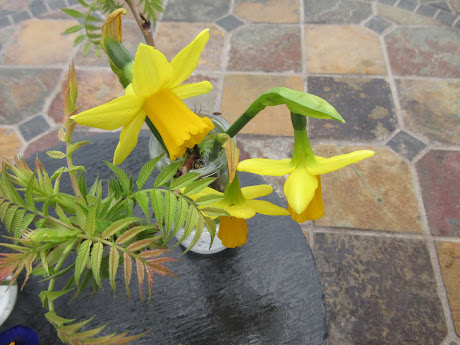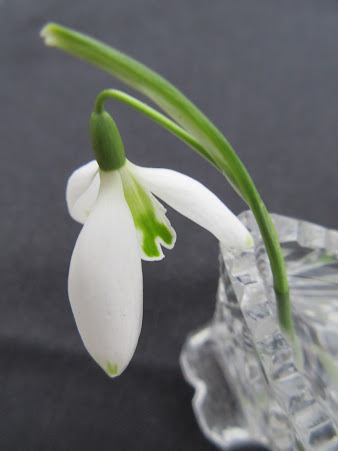This is a work in progress and I am hoping to complete it by the Summer. If you have any more information about the Syrens Trail or the Sculptures by Mark Merer which is the concrete seat, or the Sculpture under the bridge of figures by Lucy Glendinning I would be very grateful.
Here is a link to an up to date leaflet showing the Walk/Cycle Route.
https://bishopspalace.org.uk/wp-content/uploads/2023/05/Syrens-Walk-Leaflet.pdf
During 2021, my interest in 'The Stones' was further fuelled following a walking tour of Wells with our WI group. Our guide was Siobhan of Wells Walking Tours, and one of our members asked about the Stone which was at the southern corner of the moat of the Bishops's Palace. Unfortunately she had very few details, which peaked my interest further.
I mentioned that I had seen a few of the stones on a cycle ride that my husband and I explored further along the route the previous year, ending up with refreshments at Middlewick Farm Shop.
On the basis of exploring the Stones, I started up the Wells WI Cycling group. We have enjoyed increasing our stamina, and have been out for circular rides from the city, with several starting from Marker 1. Hopefully the Wells WI cycling group will manage the full ride to explore all the stones.
The Waymarkers between Wells and Glastonbury mark a popular route used by walkers and Cyclists. There are 9 stones along the 8 mile route, with 3 large, 3 medium and three small, and together form an 8 mile long musical instrument. They are roughhewn carboniferous limestone from the Mendip Hills. Each is carved with an indication of mileage to or from Wells Cathedral and Glastonbury Tor, along with an image that reflects a mystical aspect of the journey, or alludes to the history and experience of pilgrimage.
Mounted within a carved niche in each stone is a metal element that combines the scissor arch with a visual interpretation of Milton's Syrens that owes much to archaic Greek sculptures of The Griffin and to the Wyvern, emblem of Somerset.
Marker 1
The first Stone or Marker is close by the southern corner of the Bishop's Palace Moat in Wells, Somerset. I found some hand written notes from Barry Cooper, and I hope he won't mind that I include under each tone a description of the incised image and his ideas behind each image. I have also used his words elsewhere in this post. I tried to contact Barry to ask for his permission and help in bringing renewed awareness of this local series of sculptures, but I have unfortunately not have any reply yet.
The bronze sculpture has a fixed bell, each one ringing a different note when struck with a stone, was a inspired by the Triple Scissor Arch supporting the Central Tower of Wells Cathedral, and the bells of Wells Cathedral.
"The incised image is that of The Chalice, or grail, atop a labyrinth in the form of Glastonbuty Tor. The Grail is the symbol of God's Grace -perhaps the dish used at the last supper, perhaps the chalice from
which Christ shared the wine, perhaps the vessel which received his blood - perhaps all three. A vessel can also symbolise the reconciliation of inner and outer, life and death, indeed, any opposites.
The Tor as a giant, classical labyrinth is an idea **** more recently, but with an equally ancient background." Barry Cooper
Where I am unable to read his script, I have inserted ****
On a smoothed surface is inscribed I The Tor -Eight Miles
Note the fossils which are probably crinoids in the smooth stone at about 2 o'clock.
To mark the start of our ride we all clinked the bell with stones.
Marker 2
We then made our way to the second marker, which is approximately half way along the stretch of the Strawberry Way walking and cycling path, between Morrisons and the road from Dulcote.
'The motif on Marker 2 is a stylised dragon based on a spiral motif. A many layered beast; its death at the hands of a holy champion (St Michael, St George, even in one story Bishop Jocelyn of Wells), represents the victory of good over evil. Long before, however, the dragon symbolised the life-force, the essence of nature, or the unconscious mind. In Greek myth the healer Asclepius is aided in his work by the coiled serpent he carries.' Barry Cooper

The two curved sculptures forming the seats is by Artist Mark Merer, were dated 1998 and commissioned by Sustrans
Just past Marker 2 and still along the sunken trackbed under the bridge you will find a Sculpture called Flying Figures by reknown artist Lucy Glendinning. https://artuk.org/discover/artworks/flying-figures-281134?fbclid=IwAR3Ub3v4b1ikbSC9Te3m3Bj0y8ZK7EqHsJPKstFylJBEl4QQ41mHySuejCs
Marker 3
'The Number 3 is at the Heart of all these images. It stand for the Trinity; God transcendent, God immanent (of the world) reconciled by God incarnate. The triangle is a universal symbol for the reconciliation of any two opposites by a third factor. Here is a visual reference to several ancient rock carvings, including the Neolithic cup and ring markings, often thought to denote "Life in Death".'
We thought it looked like three people in a circle holding hands!
Marker 4
This marker is close to a road turning down the hill to Wellesley Farm, and affords a pleasing view towards Wells. The inset bronze on this marker is missing.
The fourth stone, rather than the Black Rock Limestone looks like the a Dolomitic Conglomerate, which is a very hard local stone, that I have been studying with my geology group. The inscription reads: IV THE TOR 6M. The written leaflet explains the motif of
'the Triple Spiral or Triskel as a spiral that combines the idea of wholeness inherent in a circle, with the idea of motion, time and change. The triple spiral, familiar from Newgrange, Co. Meath, connects these concepts with the powerful number three in one.'Update: The good news is that there is the likelihood of replacement of the arches and bells, see Lou Bailey's comment below
Marker 5
'This unusual image represents Mark Mere's Design for a contemporary earthwork - a viewing flatform which would guide the eye for each of the route's 3 major landmarks: The Cathedral, Dulcote Quarry and Glastonbury Tor. The relative distances to each point have led us to the notes sounded by each of the bells.'
Mark Mere's sculpture cement forms for a seat can be found on the Strawberry way. I am not sure whether the earthwork was ever built.
Marker 6
This marker is on the junction of Long Drove and Bourtonbridge Drove.
'The Willow needs little introduction or explanation - here on the Somerset Levels it dominates the landscape. Long cultivated for the making of baskets and hurdles, willow has more recently found favour with many local artists as a natural medium. Between here and Stone VII, and on the cycle route beyond Glastonbury, look out for Katy Hallett's living willow sculpture. Orpheus, who later overcame the sirens, is said to have carried a willow-branch talisman into Hades.'
The Bronze inset is missing. I have not noticed any of the willow sculptures, maybe the marshes have reclaimed them!
One of my favourite views is of Harter's Hill, which I first came across in the depths of winter, with grazing still lush and green, when I took this picture with the willows in the foreground.
 |
| Harter's Hill Somerset |
Marker 7
Marker 8
Marker 9
'This is an 8 mile long Musical Instrument commissioned by Sustrans for the Inverness to Santiago Pilgrimage Route for Cyclists and Walkers. It was conceived designed and constructed by Sculptor Barry Cooper and Musician/Artist Laurence Parnell.
The instrument consists of 9 stone Waymarkers on the Wells to Glastonbury section in Somerset. Inside carved niches in each stone is a bronze bell supported on a bronze scissor arch tuned to individual notes to make a complete musical instrument over the 8 mile journey from the mote around the Bishops Palace in Wells to the base of Glastonbury Tor.
Each bell can be made to ring by a small pebble'.
Extract from WLC. Home of walking videomakers.
Sometimes these stones are described as Millennium Stones as in the description of the Sixth Stone at the foot of Glastonbury Tor.
'This Millennium Standing Stone can be located at the entrance to Glastonbury Tor in Money Box Field. The stone stands at about 6ft high and has a decorative place for flowers and a bell. The stone tells us that Wells is 8 miles away.
THIS STONE IS NOT ON THE ROADSIDE AND CANNOT BE SEEN FROM THE ROAD.'
Syrens
During 1998 and 1999 I collaborated with Laurence Parnell on 9 Waymarkers for the Wells/Glastonbury route for cyclists and walkers, sponsored by Sustrans and the National Lottery in partnership with Foster Yeoman Limited. Each standing stone contains a bronze arch supporting a bell. Each bell is a different note creating an 8-mile long musical instrument. In July 1999, 300 school children led by Adam Hart-Davis, a television science and cycling enthusiast, made a one-day pilgrimage from Wells to Glastonbury. From Barry Cooper.org.uk


















































